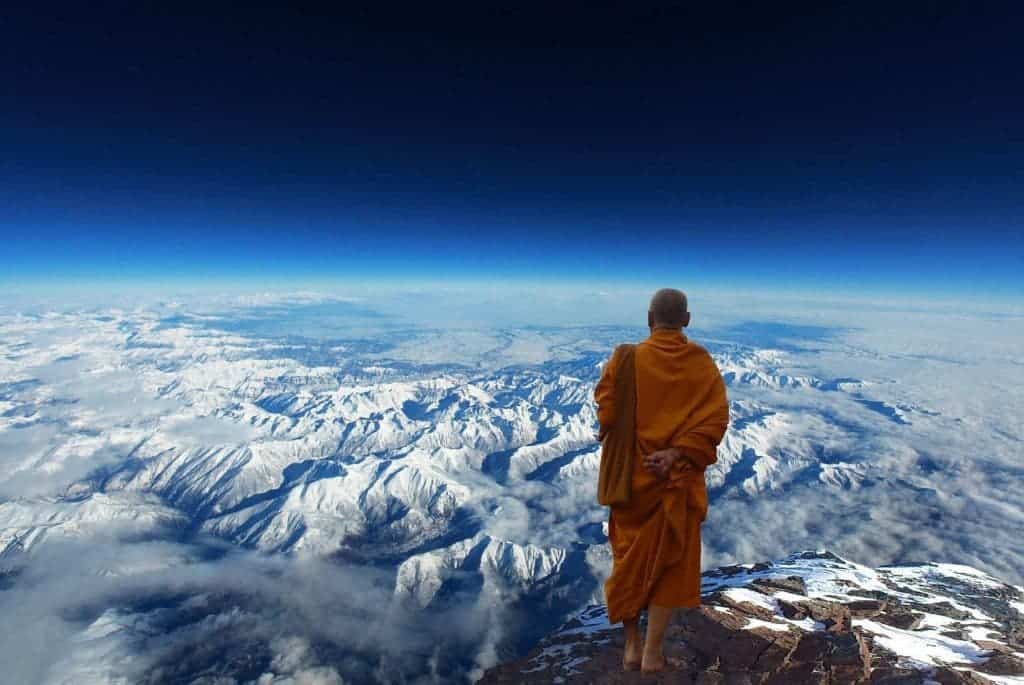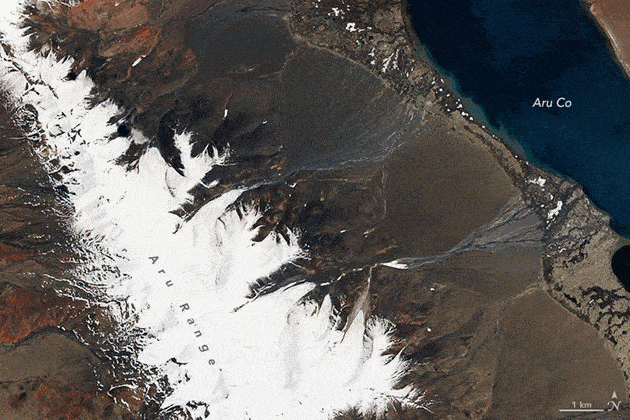
On July 17, ice and rock broke off a glacier in Tibet’s Aru Mountains, setting off a massive avalanche. Within minutes, 60 million cubic meters of icy debris were discharged, killing nine herders and their livestock. The event occurred without warning and was unexpected seeing how we’re talking about one of the most stable glacier regions in the world. In many ways, the unfortunate glacier collapse is unique. Now, a team of researchers thinks it has identified the root cause — meltwater produced by rising temperatures around glacier’s snow and ice.
The Tibetan plateau, also known as the ‘roof of the world’, houses the largest volume of freshwater outside the poles. It’s the source of rivers like Yangtze, Mekong, and Indus, supplying roughly two billion people with potable water.

The Western Tibet region has long been considered a stable glacier region, but then the avalanche in Tibet’s Rutog County happened. To make things even weirder, a second collapse occurred in the same region in September. No one was injured this time, but it was still surprising. We’re talking about a region whose glaciers have remained stable for thousands of years, so if these recent ice and rock runoffs are indicators of more to come, then there’s significant cause for worry.
In 2002, a 1.5-mile-long section broke from the Kolka Glacier in Russia killing a hundred people. It was the largest ice avalanche ever recorded. The Aru avalanche came second as the most dramatic avalanche, but a closer look suggests the two events were not triggered by the same mechanisms. The Kolka glacier is wide and lengthy, making it more prone to surging. Contrary, Aru is small and clings to the mountain’s bedrock. Aru is also classed as a ‘cold-glacier’, meaning it has changed very little since the last ice age and, presumably, should change very little in the future as well. Wrong!
“This is new territory scientifically,” University of Oslo glaciologist Andreas Kaab said. “It is unknown why an entire glacier tongue would shear off like this. We would not have thought this was even possible before Kolka happened.”
Researchers from the Chinese Academy of Sciences and Ohio State University say the only thing that can explain the Aru collapse is meltwater. The first tip is that the event happened very fast, lasting not more than five minutes.
The team analyzed satellite images and ran models to find what was the most probable cause. The likeliest scenario seems to suggest meltwater underneath the glacier acted like a lubricant, as reported in the Journal of Glaciology.
“Given the rate at which the event occurred and the area covered, I think it could only happen in the presence of meltwater,” said co-author Lonnie Thompson, a professor of Earth Sciences at Ohio State University.
It’s not yet clear where this meltwater originates from but for the researchers, one thing is undeniable: it’s caused by climate change.
The region around Tibet is warming twice as fast as the global average. Today, this region is 1.5 degrees Celsius (2.7 degrees Fahrenheit) warmer than it was fifty years ago. This might not sound like a lot but it’s enough to let melted snow to seep beneath the glacier.
“If the climate warming in the region is the primary cause of the Aru Glacier collapse, then it will not be the last one,” the researchers wrote.
Global warming is already threatening Tibet’s more than 44,000 glaciers. According to a Guardian report, 10% of Tibet’s permafrost has degraded in the past decade and the plateau’s glaciers are melting at a yearly rate of seven percent. By 2050, two-thirds of Tibet’s glaciers could disappear with untold consequences to wildlife and the millions of people which depend on them for water.


